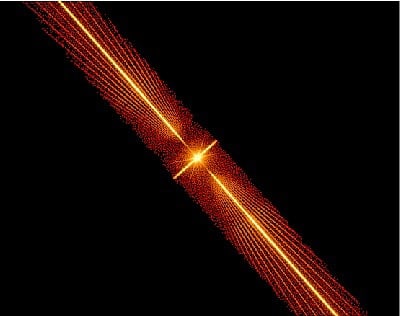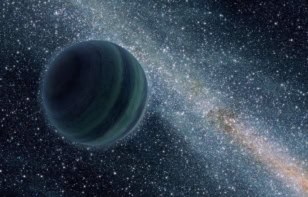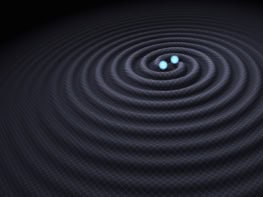Although most astrophysicists are convinced that 95% of the universe is made of dark energy and matter, they sometimes overlook the fact that they have only seen half of the ordinary or baryonic matter that makes up the remaining 5%. Now astrophysicists in the US and Mexico have found these missing baryons in the hot gas clouds that lie between galaxies. While the new results agree with predictions, they also suggest that there might be more baryons in the universe than expected (F Nicastro et al. 2005 Nature 433 495).

According to the standard model of cosmology, the universe is made up of about 70% dark energy, 25% dark matter and 5% ordinary baryonic matter. The nature of this dark energy and matter is the biggest mystery in cosmology today. However, there were also puzzles about the ordinary component of the universe: luminous matter in stars and galaxies accounts for less than 10% of the baryonic matter, with hot gas in galaxy clusters and intergalactic hydrogen accounting for another 30-40%. Until recently the rest of this matter had escaped detection.
Computer simulations of galaxy formation predict that a large number of the remaining baryons should be found in hot, low-density intergalactic gas. One way to detect this missing matter directly is to look for the characteristic absorption lines of heavy elements, such as oxygen and nitrogen, in the spectra of objects known as blazars.
Fabrizio Nicastro and colleagues at the Harvard-Smithsonian Center for Astrophysics, Ohio State University, the University of California at Berkeley, UNAM in Mexico and the Massachusetts Institute of Technology used the space-based Chandra telescope to observe X-rays from a blazar called Markarian 421.
Nicastro and co-workers detected oxygen and nitrogen absorption lines in the spectrum of two filaments of “warm-hot intergalactic medium” at distances of 150 million and 380 million light-years from the Earth. In 2003 the same team found similar evidence for the missing baryons much closer to home in our “local group” of galaxies.
“Only now with the discovery of these two filaments of warm-hot intergalactic medium at cosmological distances can we definitely claim to have observed these baryons and estimate the mass density of this component in the universe,” Nicastro told PhysicsWeb. “This turns out to be fully compatible with predictions and with the amount of missing baryons. However, our observations also seem to suggest that the actual number of baryons could actually be larger. This would of course pose a problem in our current, widely accepted, cosmology scenario.”
The observations could also allow astronomers to start studying the chemical history of the universe. “This is something for which we do not really have ‘a theory’,” says Nicastro.



